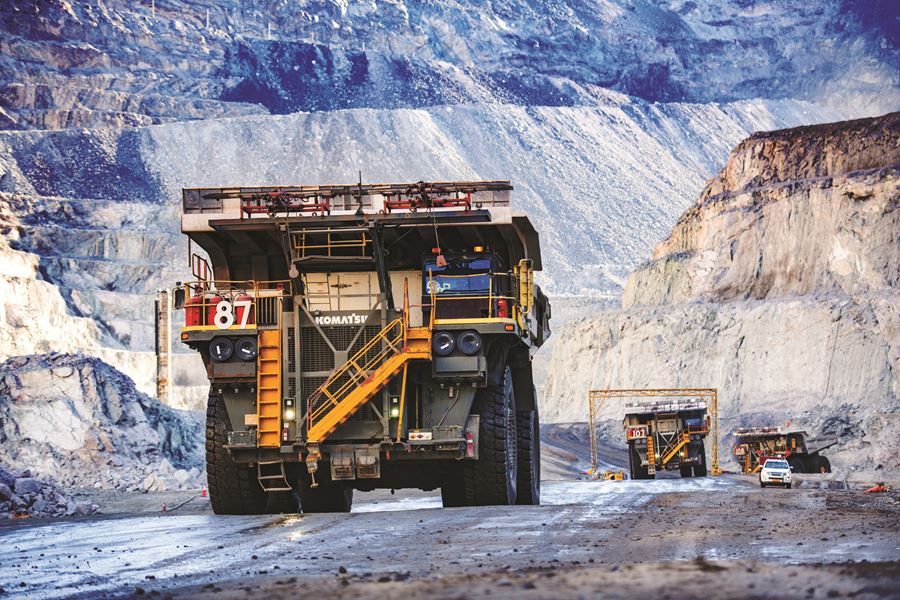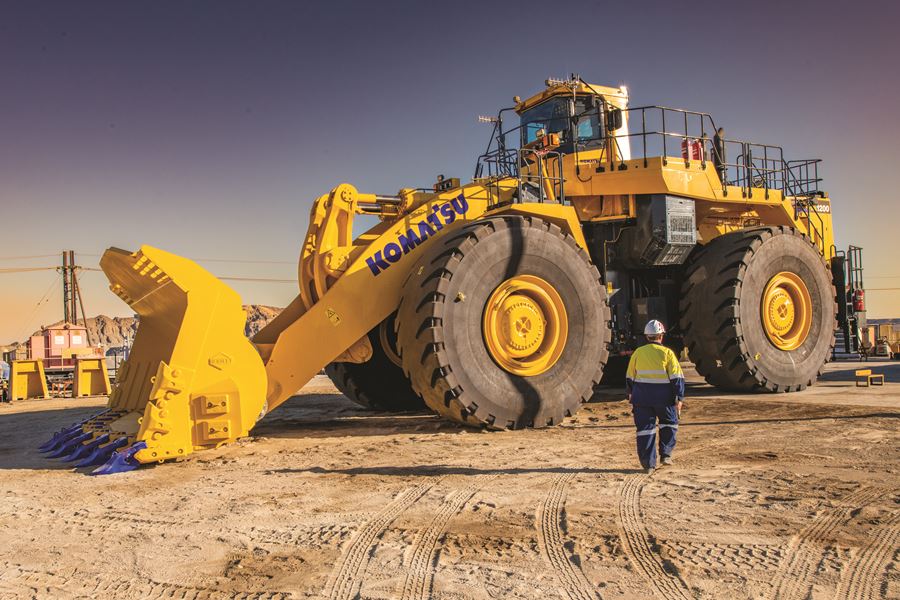Rössing Uranium’s operations consist of two distinct activities: the first is mining uranium-bearing rock, and the second is processing this ore into uranium oxide for the world’s nuclear energy market, which fuels the generation of electricity.
The uranium located in our mining licence area is embedded in very hard and abrasive granitic rock, known as alaskite. To mine the necessary volume of ore and waste, the mine must conduct blasting operations regularly.
Electric and diesel-powered shovels load uranium-bearing rock onto haul trucks, which transport the ore to the primary crushers for the first stage in the crushing process. From there, the crushed ore is conveyed to the coarse ore stockpile, where it is reclaimed and put through additional crushing stages in the fine crushing plant before the processing stage of operations begins.
Mining operations
In 2022, we mined 16.6 million tonnes of material, which is 20 per cent less than 2021. 9.0 million tonnes was ore (10 per cent less than 2021), with waste and low-grade material being 7.4 million tonnes, equating to a strip ratio of 0.81. A further 0.2 million tonnes of waste was dumped in-pit. Optimistically, we anticipate the strip ratio to be below 1.0 going forward, as the pit gets deeper.
A lower-than-expected crushed production of 9.0 million tonnes (6 per cent less than 2021) and a 3 per cent improvement in plant feed grade led the mine to achieve 8 per cent lower uranium production for the year.
The Mining Operations department remained with the previous year’s staff complement as lower-mined tonnes are expected for the remaining life-of-mine. Forty-two operators and technical employees have been incorporated into other departments where their skills are needed. Some havecontinued with attaining practical experience to complement their Namibian qualifications.
The envisaged lower mined tonnes resulted in reduced fleet impacting forty two operators.
We had a few significant incidents (no injuries) that once again highlighted the need for our teamsto always be vigilant and to escalate concerns in a timely manner.
Continuous training and control measures need to be frequently updated and explained for pit equipment to uphold the highest safety and integrity.
The availability of the fatigue systems has improved drastically over the course of the year. Haulroad 19 ramp was decommissioned in the early part of 2022. This is a landmark change that shows thatthe open pit is transitioning into the bottom benches. All open pit ramps are now on the north side of the pit.
There was great success from our radar monitoring system with four potentially catastrophic falls of ground properly managed without risking people or equipment. The geotechnical team was head-on with guidance and was able to forewarn the operations teams about the impending rockfalls. We were able to block access to and carefully stabilise the affected areas. The ability to use radar-monitoringtechnology to track movement and carry out trend analyses is a key ingredient of this control measure.
Also notable was the introduction of electronic blasting technology for pit-limit blasting. This change allows the mine to decrease the amount of energy going into the final pit walls, which helps maintain the long-term stability of our open pit. The technology has since been adopted for all limit blasting atRössing Uranium Limited.
The Modular System was upgraded to the latest technology during the year. This was accompaniedby an upgrade to the reporting system and a new survey database development.
The pit dewatering programme was supported by the addition of a diesel pump to cater for periods when the electrical units are disconnected due to activities such as blasting and repairs.
Processing operations
The Processing Operations is responsible for safe and efficient processing of a blend of uranium ore through multi-unit operations and processes for optimum uranium liberation, dissolution, concentration, and purification to produce a quality calcined uranium oxide (U3O8) product. This product is securely packed and shipped to our customers for further conversion.
During 2022, we milled and crushed 9.0Mt (which is 7% below what we achieved in 2021), and produced 2,659t of uranium oxide which was also 8% below drummed tonnes achieved for 2021. The main challenges we experienced during 2022, which resulted in low production, were the fire incident we had earlier in the year on one of our critical conveyors that resulted in significant plant downtime, and the unmitigated 15-day fresh water supply interruption we had in December due to a sulphur outbreak in the sea resulting in the shutting down of the Orano desalination plant. 10 days weremitigated through our increased reservoir capacity.
Technological advancement remains a key focus and has resulted in improvements in certain areas across the department in 2022. CIX throughput has improved by 12% from 2021, and soluble loss reduced by 0.4%. The replacement of LM2 pulverising milling machines with HP-MA semi-automated grinding machines has resulted in significant improvement in quality control, dust management, health, and safety within the laboratory. The implementation of the Rotating Disc Electrode-Optical Emission Spectroscopy (RDE-OES) for analysis of condition-monitoring oil samples significantly improved turnaround time and accuracy, which in turn improved the response time for maintenance intervention to avoid catastrophic failure of our critical equipment. Technological advancement will remain a key focus area for 2023 – to further improve on efficiencies, costs, major consumable consumption rates, health, and safety
ENGINEERING
PROJECTS
During the year 2022, Rössing executed 42 engineering projects across the mine.
1. Replacement of the CAT994 Loader
The project to replace one CAT994 Loader was approved for execution in 2022. The CAT994 is replaced with a Komatsu WA1200-6 and is aimed at loading, re-handling ore from stockpiles to feed the primary crusher, etc.
Rössing Uranium employs two CAT994 Front-End Loaders (FE15 and FE16) which can load the 180 tonne Komatsu 730E trucks. These machines supplement the loading fleet of four Komatsu PC5500 face shovels and are primarily used to re-handle ore from the run-of-mine (“RoM”) stockpilesto feed the primary crushers with sufficient material of the correct blend.
Two loading units are required to achieve the re-handle tonnes and at times of poor FEL availability, one of the face shovels is moved to the RoM stockpiles to secure the crusher feed. The Komatsu WA1200-6 has been procured and was delivered to site at the end of December 2022.Assembly to be done in 2023.
The project is in the execution phase and the following has been done so far:
- Assembly WA1200-6
- Rear/front axle
- Main body
- Power units
- Cab and
- Continue with boom assembly
Commissioning and full operation of the WA1200-6 is expected to be completed in Q1 of 2023.
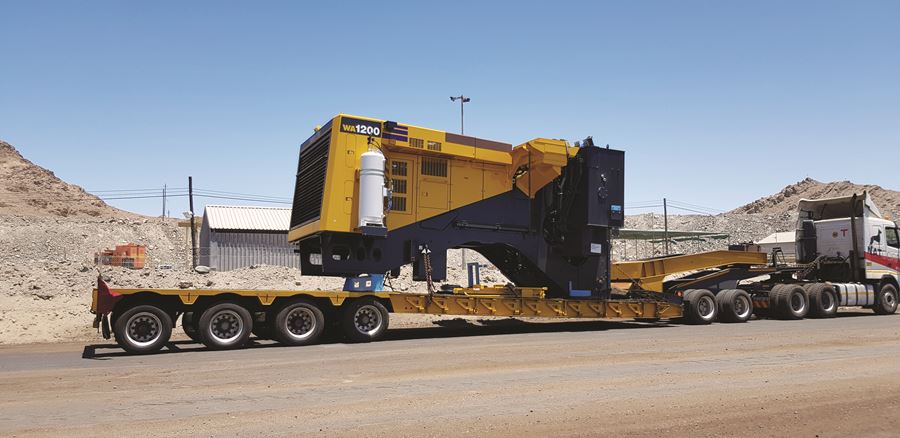
Delivery of Komatsu WA1200-6
2. Western Dewatering Wellfield Upgrade
The westerly dewatering wellfield (“WDW”) forms part of the Rössing Uranium near source seepage control systems (“SCS”). The dewatering wellfield’s function is to intercept the fractured rock aquifers and recover water used in our extraction process and deposited on our tailings storage facility (“TSF”), referred to as seepage, as it infiltrates the TSF and is transmitted along these rock fractures.
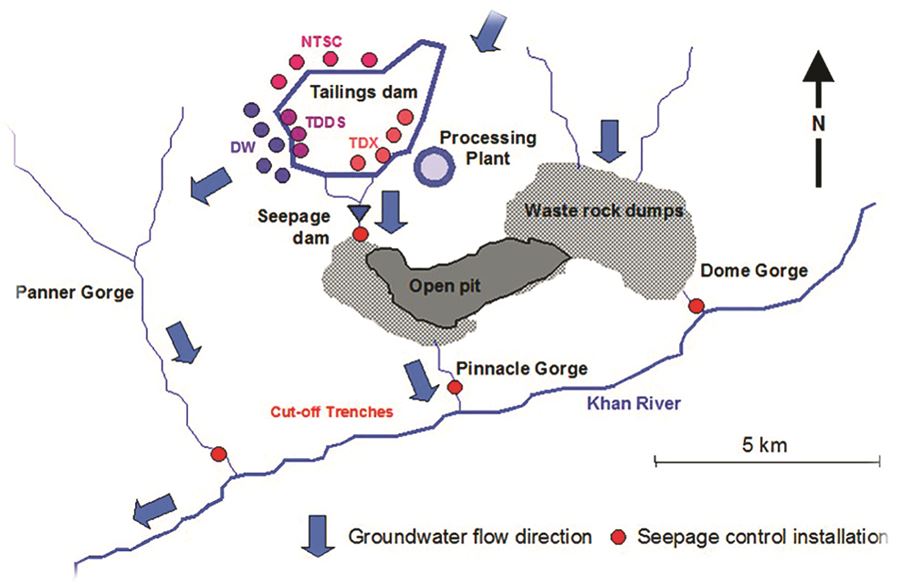
Legend
- NTSC – Northern Tailings Seepage Control system
- DW – Dewatering Wellfield (This Project)
- TDDS – Tailing Dam Dewatering System
- TDX – Tailings Dam Extraction system
- Trenches – Large diameter boreholes
The Rössing Seepage Control System (“SCS”)
Abstraction boreholes in the western dewatering wellfield were drilled decades ago, although pumping infrastructure is maintained, borehole yields from some holes reduced over time, mostlyas precipitates clogged the fracture zones.
Due to the ageing of these boreholes, a project was approved in 2021 to drill and equip additional boreholes. The objective of the project is to support the existing ageing borehole network used tointercept and recover seepage.
In 2022, nine newly drilled boreholes were equipped with pumping infrastructure to support seepage recovery in the wellfield. A new reservoir was also constructed to support the existing reservoir withseepage collection before it is transferred to the processing plant for reuse.
Quick facts about the project:
- Seven AC-powered boreholes installed
- Two solar-powered boreholes installed
- Boreholes’ pump rate range between 2.5 – 30m3/hr
- A circular reinforced concrete reservoir with a 56m3 capacity constructed
- Two transfer pumps installed to return seepage to the processing plant
3. HME Tyre Press
In August 2022, the EDMO 250-tonne tyre press was replaced with a power press 3557E. The EDMO press was used for stripping and assembling solid tires for HME haul trucks, but there were safety concerns as operators were exposed to tensioned tire components during tire assembling and stripping.
The new 3557E power press is designed with safety, ease, and efficiency in mind. One major improvement is the incorporation of a remote control, which allows the operator to control the machine from a safe distance. Additionally, the machine is equipped with warning strobe lights and horns, which alert others in the vicinity when the machine is in operation. To further enhance safety, the machine also features a 2.5-meter-high safety gate.

New power press for tyre assembling
4. Slope Stability Radar
A slope stability radar (“SSR”) is deployed in the open pit to manage slope failure hazards and is therefore a key control for the slope failure critical risk. SSRs are the only monitoring equipment that can provide near-real time warning of imminent slope failures and therefore provide an added benefit of minimising delays when production activities are taking place near hazardous areas.
Rössing acquired SSR114 in 2010 and SSR226 in 2014. The two radars have operated beyond the seven-year lifespan of radar units. These radars are part of the series 1 generation technology of the supplier as compared to the series 3 the supplier has recently released. This meant the SSRs the company was using had aged and the relevant software has gone beyond the support of these radars. Some of the critical spare parts on the radar units have become obsolete and unavailable in the market, which made it economically challenging.
Mining Operations, supported by the Projects department, embarked on a project to replace the outdated SSRs. This is important to ensure undisrupted monitoring of the south slope and ensure that there is redundancy monitoring to the critical areas (south slope) should one radar become faulty. In addition, the replacement was necessary to ensure adequate management of slope stabilities around the pit.
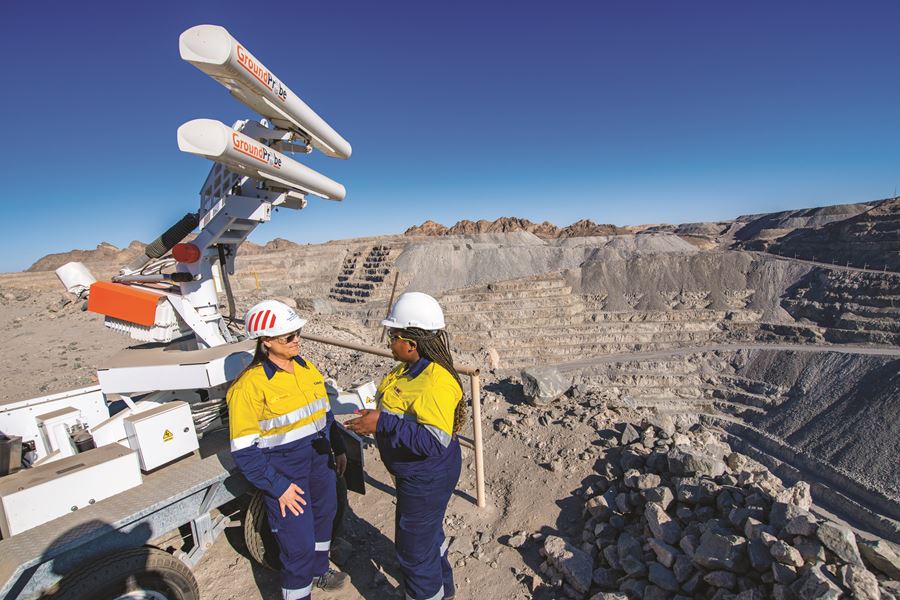
SSR114 new unit deployed at Mining
SSR114 was fully replaced and commissioned in July 2022 and this was just before the grace period of software support for this specific radar unit could expire, on 30 August 2022. The SSR226’s support is set to expire on August 30 2023, and this radar in currently placed on order and expected to be commissioned in June 2023.
The success of the project
With the new Series Radar commissioned in July 2022, it was able to detect isolated rockfall experienced on 20 August 2022
5. Visitor Centre
The Visitor Centre building was improved to host visitors from all walks of life with the aim of creating a positive image for Rössing. The upgrade addressed the outdated IT infrastructure, non-functioning air conditioners, and insufficient conference facilities and office space. The refurbishment included re-painting the exterior and interior, upgrading air conditioning, electrical cabling, lights, and IT setup. The renovation also improved hygiene in the toilets and kitchens
The addition of shaded structures and a safe platform at Point John, Hage and Hill Jim Viewpoints improves the visitor experience. These upgrades will enhance visitor satisfaction and increase business opportunities, creating a strong return on investment for Rössing in the future. The Visitor Centre was completed and inaugurated in November 2022.
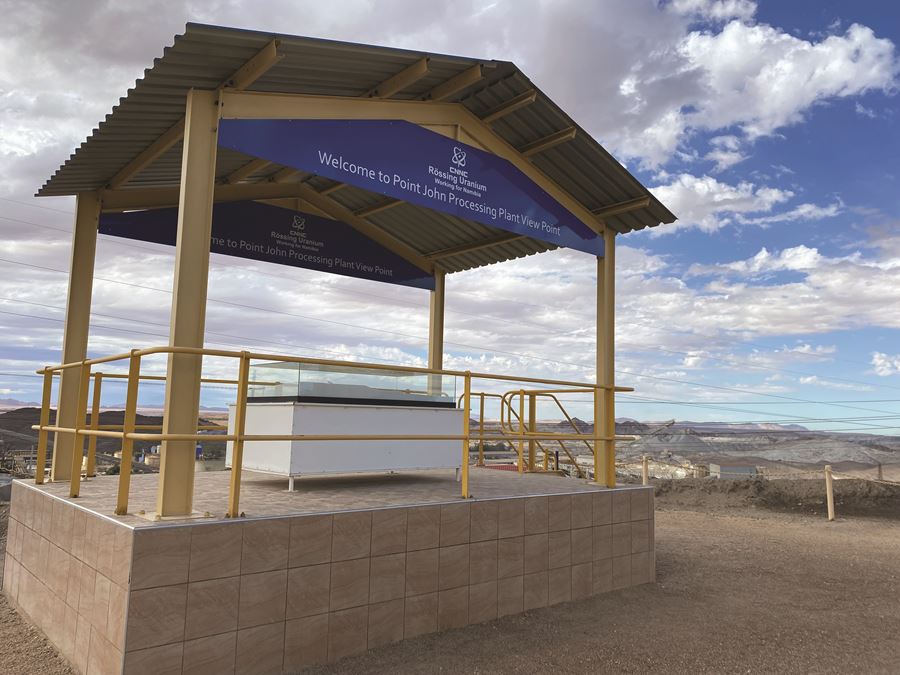
Point John Viewpoint
5. Visitor Centre
The project to replace one PC800 was approved for execution in 2022.
Mining operations had two excavators, of which one is on major breakdown and currently not in operation since September 2021. The excavator on breakdown is a Komatsu PC800 (BA07), which was acquired for operations in 2007. BA07 is used to support the drilling and blasting operations with the following tasks:
- Toe clean-ups to enable drilling of both pre-splits and blast shots
- Piling up of material in different areas for picking up with front-end loaders
- Digging trenches and sumps for support work
- Blast shot toe clean-ups to unconfine the shot/create free face
The project is in execution phase and the following has been done so far:
- C850 assembled
- Fire suppression system
- Automated grease lubrication system
- Additional handrails are underway
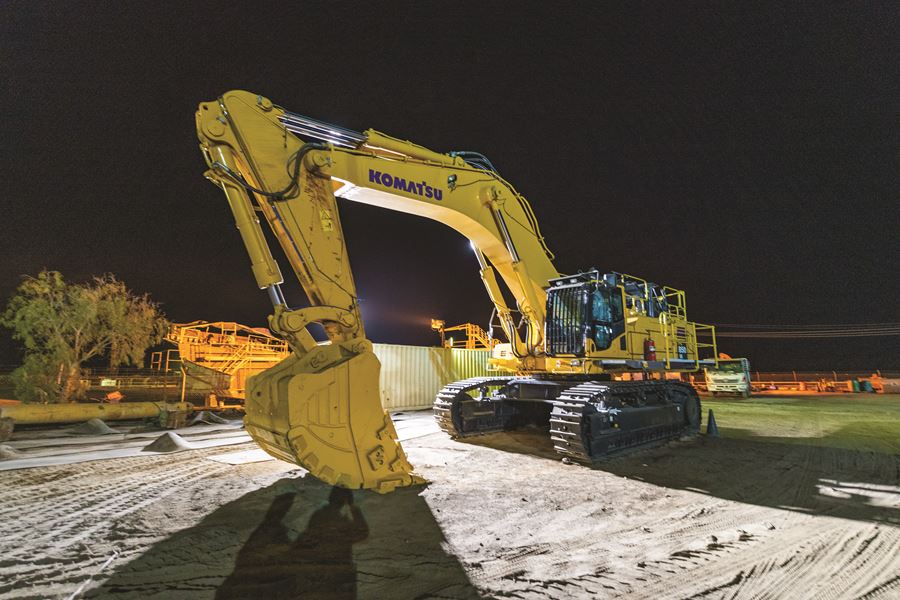
Commissioning and full operation of the PC850-R1 are expected in Q1 of 2023
7. Water Storage Capacity Increase
The project to increase water storage capacity was approved for execution in 2020. This project is aimed at minimising production outages which are a result of the unavailability of fresh water. A total of six glass-fused-to-steel bolted tanks were constructed; each tank size is 41.27m in diameter and 8.4m in height, with a capacity of 10,000m3. The project resulted in a total increase of 60,000m3 to compliment the storage capacity that is provided by NamWater’s reservoirs.
Construction work was performed by a local contractor that was responsible for all the onsite construction activities. The construction work started in May 2021. A lot of earthwork preparations were needed. This includes the tanks area, pipeline route, as well as the pump station. The concrete foundation for the first tank (i.e., Tank 1) was completed in early July 2021, which was an important milestone for the project, as it paved the way for tank shell construction to start. The assembly of the tanks started in early August 2021 and took six months to complete.
The way the tanks are assembled
The tank body is installed from top to bottom by layers, each layer is lifted by the elevator until the installation of the tank is completed. The roof is installed once the tank body is completed. Theprocurement of glass-fused-to-steel bolted tanks on this project highlights one of our values, innovation.
Some interesting facts about the project:
- Total number of contractor employees for the duration of the project: 100
- Total concrete used: 4,423m³
- Reinforcement: 508 tonnes of steel
- Tanks (glass-fused-to-steel sheets): 903 tonnes of steel
- First water into Tanks 1 and 2: 29 October 2021
- New tanks supplied the mine with fresh water during a planned Orano desalination plant shutdown, where NamWater’s water supply to the mine was interrupted
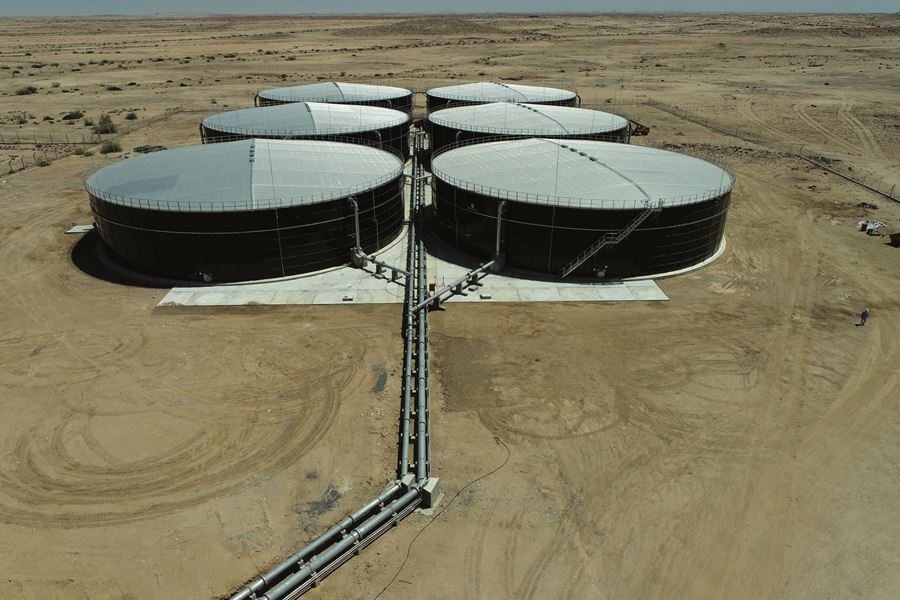
Six new Rössing tanks
8. Roaster 2 Replacement
The Rössing processing plant makes use of roasters in the final processing of uranium. There are two roasters (multiple heart furnaces or MHF) that are used to roast the yellow cake uranium product. These units have been operational for over 45 years and because of wear and tear, they have reached their end of life and therefore need to be replaced. A structural integrity assessment was done on both roasters, a result of which guided the short- and long-term asset management strategy on the roasters. The replacement of Roaster 2 was prioritised, after which Roaster 1 will be the next one to be replaced. Mitigation measures were also put in place to ensure that the business is not at risk while the replacement strategy is being executed. Roaster 2 replacement project was approved for execution. The replacement includes installation of a new roaster, which includes a roaster structure with refractory, burners and control system.
The new roaster has been procured and was delivered to site in November 2021.
The project is in execution phase and the following has been done so far:
- Procurement and supply of MHF, burners, refractory and control system
- Civil works for the new roaster structure and Motor Control Centre (MCC) in progress
- Steel works for the roaster structure in progress for the placement of the new roaster
- Control system design and hardware supply nearing completion
Commissioning and full operation of the new roaster is expected to be completed in Q2 of 2023.

New roaster on-site
Outlook for 2023:
- Completion of critical projects (Roaster 2, Sewer System Reinstatement, Mine Wide CCTV Surveillance, Replace Steel Cord Belt Vulcanising Press, Mining Excavator Replacement)
- Roaster 1 Replacement
- Drumfilter 1 Replacement
Process safety management
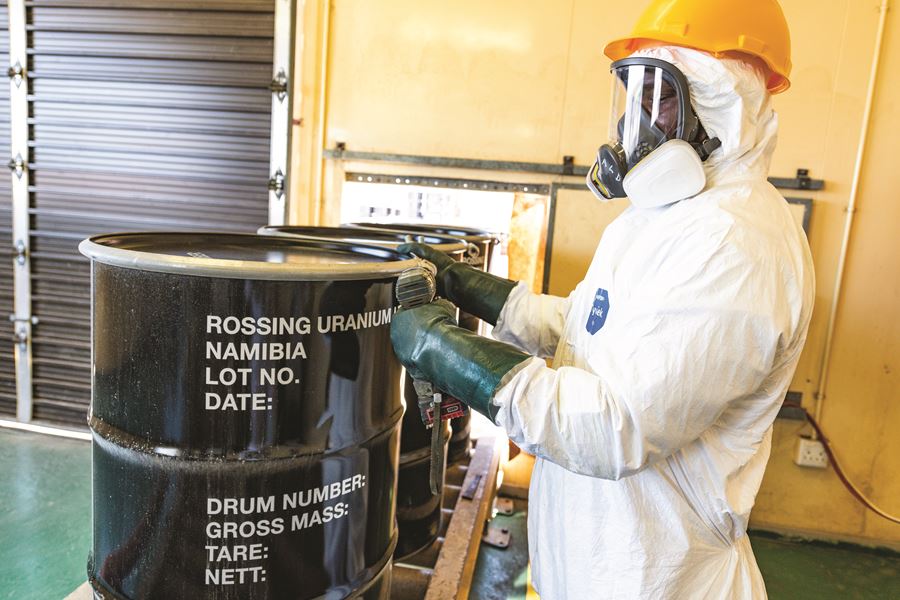
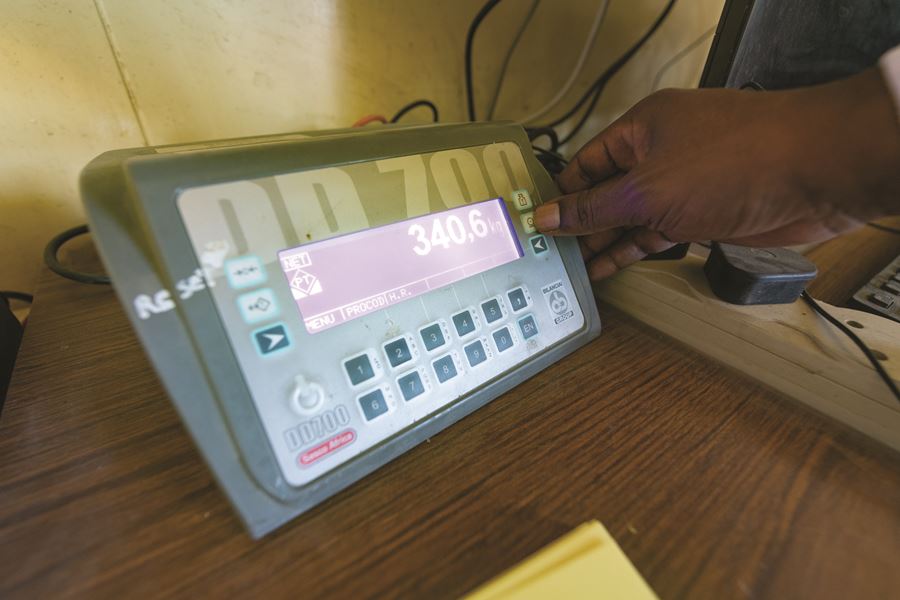
Process safety management (“PSM”) is a systematic approach of controlling the unwanted release of hazardous substances, process solutions, or fires and explosions that have the potential to significantly impact the health and safety of employees, the environment, or the business.
The four process safety hazards managed at Rössing are:
- Anhydrous ammonia gas
- Concentrated sulphuric acid
- Fire in the solvent extraction and final product recovery plant
- Engulfment due to large processing tank failures
In 2022, the Rössing specific process safety code of practice was implemented. This code of practice was developed using the Centre for Chemical Process Safety risk-based process safety (“RBPS”) management approach. The RBPS management approach at Rössing includes four pillars and 12 elements. The four pillars are:
- Commitment to process safety
- Understanding hazards and risks
- Systems to manage risk
- Learning from experience
A first and third party audit was conducted in 2022, with specific focus on all concentrated sulphuric acid reticulations at Rössing mine and Walvis Bay. This is to ensure sustainable application of process safety standards as per our process safety code of practice. The findings from the audits were converted into an action plan, which will be part of continuous improvement of process safety at Rössing in 2023.
Also in 2022, the process safety section functioned actively in the design and execution of the first final product recovery roaster replacement project. This is to ensure compliance with all process safety and other engineering standards and protocols to prevent any catastrophic events during commissioning. In 2023, a control strategy will be implemented to prevent any catastrophic events during operation of the roasters in final product recovery.
Information technology
Technology trends supporting the 4th Industrial Revolution (4IR) continued to emerge during 2022 and influenced technology decisions and activities at Rӧssing.
Overall system and network infrastructure availability during 2022 was above acceptable standards, with minimum disruptions. The availability of the mine’s core enterprise resource planning applicationwas well within availability targets, supporting the business’s operations.
Information and cyber security importance is increasing worldwide to protect the digital assets of companies. Rӧssing’s cyber security strategy embraces the NIST Framework that covers the functions “Identify, Protect, Detect, Respond and Recover”. During the year, a security operation centre (“SOC”) was introduced to actively monitor the internet protocol (“IP”) and operational technology (“OT”) areasof the mine. In addition, endpoint encryption of enterprise devices such as laptops was introduced.
Several projects were completed during 2022 delivering on agreed investment to future proof ourenvironment. The following is worth mentioning regarding projects:
- The SAP S4/Hana upgrade project started in the second half of 2022 and is on track to be completed in March 2023.
- To support a robust Disaster Recovery Plan, a new 10-gigabyte local area network fibre connection was established between the mine site and the office in Swakopmund. This will present enhanced failover capabilities for business-critical systems to support the disaster recovery plan.
- A new Rӧssing tender portal was introduced to support our supply chain activities. This solution will make it easier for our Supply Chain Management department to manage the activities supporting tenders.
- CCTV Project – Substantial progress was made during 2022 to deliver the core platform as well as the surveillance portion of the project. The solution provides a single integrated observation and monitoring platform with advanced analytical capabilities to protect the assets of the mine.
- An Enterprise Information Management (“EIM”) roadmap was established in 2022. A Data Management Community of Practice was established and aims to establish a core set of data and analytics users in the respective business areas to transform data into information, knowledge and ultimately, wisdom.
Looking forward
Good progress was made during 2022 to establish the core pillars of a technology strategy that supports a connected available enterprise architecture for the mine. This will be the foundation for introducing technology for the life-of-mine extension to support an efficient mining operation.
An enterprise architecture assessment of all technology applications at the mine is in progress. The outcome will be incorporated into the information technology strategy to seek opportunities to consolidate and minimise the number of applications and related costs to support business efficiency.
In addition, closer collaboration between business and IS&T departments will ensure that our technology enterprise continues to support our business areas in a digital era, embracing 4th Industrial Revolution topics
LIFE OF MINE EXTENSION
PROJECT FEASIBILITY STUDY
The Rössing Uranium life-of-mine extension (“LoME”) from 2027 to 2036 was the focus of a feasibility study undertaken from June 2021. The Ministry of Mines and Energy (“MME”) approved the extension of the RUL Mining License (ML28) by 15 years to July 2036, which covers the timeline required for the execution of LoME.
The Phase 4 mining pushback is the lowest cost extension option available to RUL and will benefit from leveraging off the existing processing and infrastructure facilities. In May 2021, Rӧssing’s Exco commissioned a dedicated project team to complete a feasibility study for a broader LoME project by the end of 2022. A total budget of N$100 million was made available for diamond drilling, engineering and commercial studies, covering an expanded scope that included mining; processing; tailings; closure and the organisational structure.
LoME requires deeper mining of the same SJ ore-body through a north-eastern extension of the current pit (Phase 4 pushback) to supply the existing process plant with sufficient ore until the end of 2036 at current throughput rates of 9.2 Million Tonnes Per Annum (Mtpa). There is a need to proceed with this pre-strip as soon as possible (2024) to gain access to the ore in Phase 4 before the current ore supply from Phase 2/3 is depleted. An extension of the tailings storage facility footprint is also required to accommodate the additional 92 million tonnes of tailings, which must be dewatered to a higher density (thickened tailings).
All LoME scenarios considered, have a positive NPV at a long-run price of US$51.36/lb U3O8 (Real 2023$) and exchange rate of N$15.95/US$ (Real 2023$). Only the contract mining scenarios provide NPVs equal to, or better than the base case (LoM to 2026), however, with the benefit that this approach will not require capital for a new HME fleet that makes it easier to fund other projects that increase the value of LoME. Of these, solar PV power is the most assured, while the value of horizontal belt filters is still to be confirmed. Better recoveries from Phase 4 ore are an upside, which will only be realised with the approval of LoME. The same is true of opportunities beyond LoME, such as the development of Heap Leach and future exploitation of the Z20 orebody.
LoME also offers several macro-economic benefits including:
- • Similar employment numbers as base case, for an extended period to 2036
- • Similar multiplier effect for Erongo and Namibian economy to 2036
- • Extended Government of the Republic of Namibia (GRN) income from royalties, corporate and payroll tax
- • Continued social contributions for the extended period to 2036
